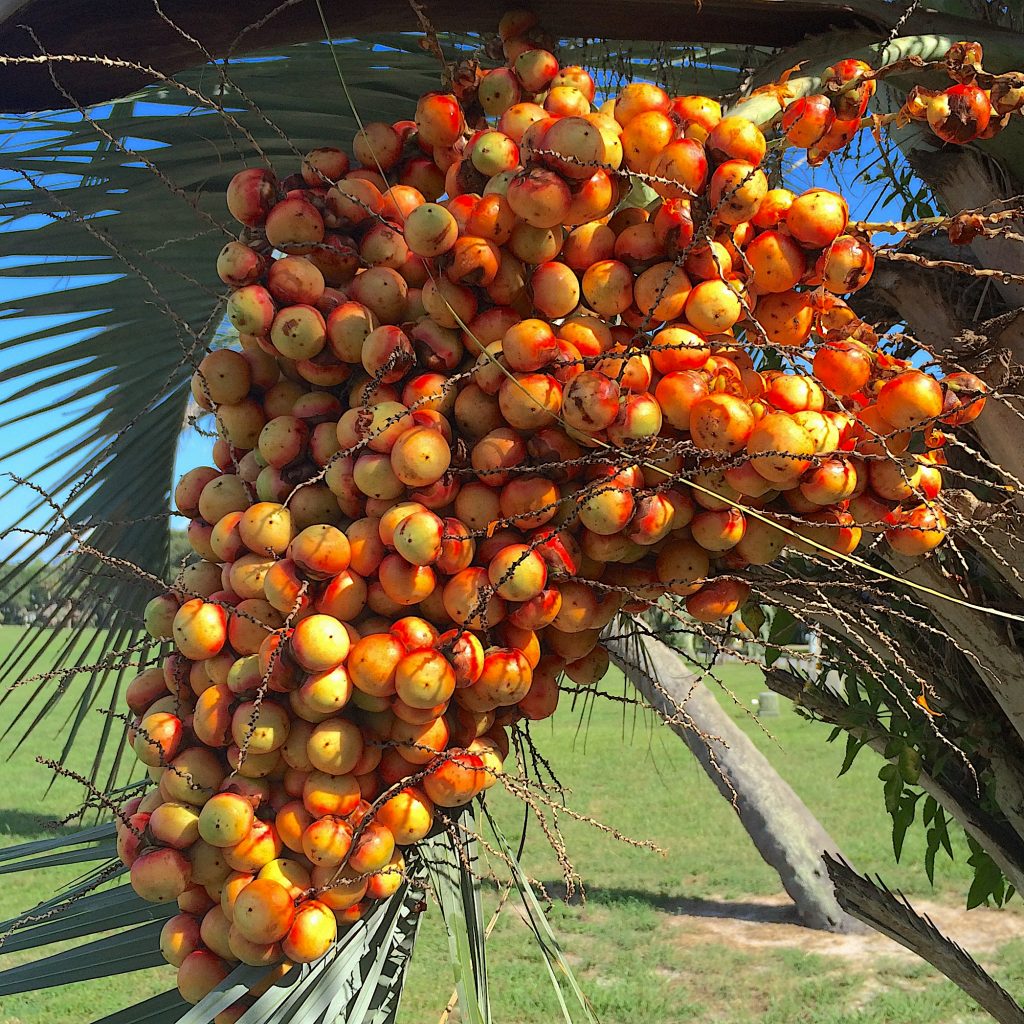
Pindo Palm can fruit almost anytime. Photo by Green Deane
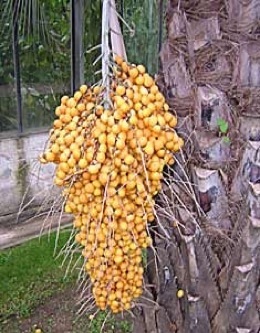
Pindo palm fruit is hard to resist.
Pindo Palm fruit are ripening. We ate some this week. They really don’t have a season, but they do favor the spring and fall. You’ll find them on many lawns, parks or in particular cemeteries, where they are a common landscape plant (a palm that does not grow very tall.) They are usually under 12-feet high, a feather palm with spines on the fronds. The fruit starts out green then turns yellow (not orange, orange is the Queen palm) then dark yellow, soft and sweet. The kernel is edible, too, It tastes like coconut and is easy to remove, unlike the queen palm whose kernel also tastes like coconut but is difficult to remove. Queen palm fruit is very sweet and fibrus.
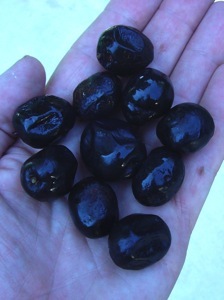
Eating Saw Palmetto fruit is a challenge.
We also recently saw thousands of ripe Saw Palmetto fruit. While nutritious, they are something of a challenge to eat. The berries were described in 1692 as tasting like rotten cheese soaked in tobacco juice. The flavor has not improved since then. To the modern palette they seem more like an intense blue cheese with hot pepper added. Indeed, a false blue dressing can be made from the fruit pulp. The pungent berries are also a $70 million poaching business (for dozens of medicinal uses.) It is illegal to possess said berries without a permit.
Foraging classes: There won’t be foraging classes for a few weeks as Florida recovers from hurricanes Helene and Milton. The issue is more than human displacement, but also flooding making parks inaccessible.
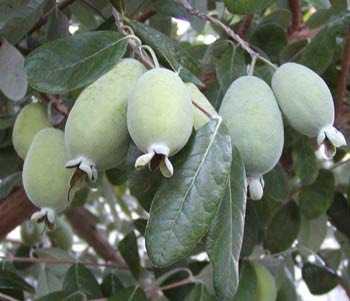
Ripe and unripe Pineapple Guava looks the same. Photo by Green Deane
One can also find ripening Pineapple guava now. Perhaps no shrub (Feijoa sellowiana)was more championed and least planted as the Pineapple guava. Look for it in parks rather than front yards. It produces edible blossoms, leaves that can be made into tea (or wine.) And the fruit is edible. Besides its odd shape the fruit says green as it ripens only growing softer (which is when one knows it is edible. I eat skin, seeds and all.)
I think we’ve seen the last of podocarpus arils for this year. And Java Plums (the Jambul.) Sea grapes have yet to ripen. Also misbehaving this year are Ringless Honey Mushroom. They are usually a November crop in Florida, but I’ve seen some in recently. Perhaps the Hurricanes are to blame.

Green Deane Forum
Tired of Facebook and want to identify a plant? The Green Dean Forum is up and running again. Have you come to dislike Facebook, then join us on the forum. Perhaps you’re looking for a foraging reference? You might have a UFO, an Unidentified Flowering Object, you want identified. On the Green Deane Forum we — including Green Deane and others from around the world — chat about foraging all year. And it’s not just about warm-weather plants or just North American flora. Many nations share common weeds so there’s a lot to talk. There’s also more than weeds. The reference section has information for foraging around the world. There are also articles on food preservation, and forgotten skills from

You get the USB, not the key.
172-video USB would be a good end of spring present and is now $99. My nine-DVD set of 135 videos has been phased out. The USB videos are the same videos I have on You Tube. Some people like to have their own copy. Most of the 172 USB videos have to be copied to your computer to play. If you want to order the USB go to the DVD/USB order button on the top right of this page. That will take you to an order form.
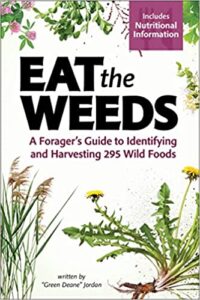
Now in second printing.
EAT THE WEEDS, the book, 274 plants, 367 pages, index, nutrition charts and color photos. It’s available in many locations including Amazon. Most of the entries include a nutritional profile. It can also be ordered through AdventureKeen Publishing.
This is weekly newsletter #613. If you want to subscribe to this free newsletter you can find the sign-up form in the menu at the top of the page.
To donate to the Green Deane Newsletter click here.
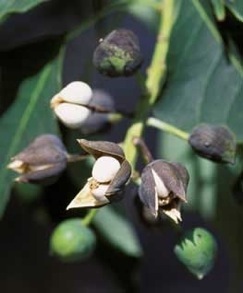 Is it edible? Yes, no, maybe… The Chinese Tallow tree is both banned and championed. It’s edibility is also linked to why it’s even in the United States to begin with. The tree was imported by none other than Ben Franklin (well… he sent some seeds to a friend.) The purpose was to use the white external seed fat for making candles which beef suet, tallow, was once used for. Hence the tree’s name in English. In theory that small coating of saturated fat on the outside of the seed is edible. It is also very stable. But there are two problems. It can be very difficult to remove and inside the seed there is an oil toxic to humans. So the fat and the oil should not mix. Some people have experimented with crushing the entire seed and heating the mash thus melting the saturated fat along with releasing the toxic oil. When they settle the edible fat and the non-edible oil separate on cooling. In China, where the tree is valued, they steam the white saturated fat off. The tree, while an invasive species in some areas of North America — such as Florida — is being considered as a good candidate for bio-fuel. You can read my article about it here about it here. A later magazine article about the species is here.
Is it edible? Yes, no, maybe… The Chinese Tallow tree is both banned and championed. It’s edibility is also linked to why it’s even in the United States to begin with. The tree was imported by none other than Ben Franklin (well… he sent some seeds to a friend.) The purpose was to use the white external seed fat for making candles which beef suet, tallow, was once used for. Hence the tree’s name in English. In theory that small coating of saturated fat on the outside of the seed is edible. It is also very stable. But there are two problems. It can be very difficult to remove and inside the seed there is an oil toxic to humans. So the fat and the oil should not mix. Some people have experimented with crushing the entire seed and heating the mash thus melting the saturated fat along with releasing the toxic oil. When they settle the edible fat and the non-edible oil separate on cooling. In China, where the tree is valued, they steam the white saturated fat off. The tree, while an invasive species in some areas of North America — such as Florida — is being considered as a good candidate for bio-fuel. You can read my article about it here about it here. A later magazine article about the species is here.


Hi. I am looking to learn how to forage. Do you still offer classes? I live near Tampa, Fl.